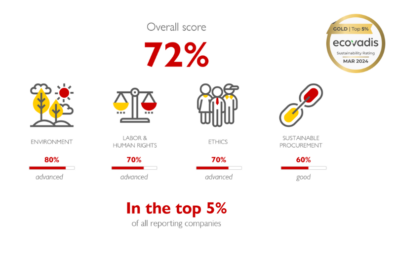Businesses are constantly seeking ways to streamline their processes and boost efficiency. One of the most effective strategies they employ is workflow automation. But what exactly are workflow automation tools, and how can they benefit your organisation?
In this blog, I answer those exact questions and give some top tips on how to implement these solutions in your business.
Written by Michelle Kermath

Michelle is Head of Consultancy & Technical – ECM at Crown Records Management with years of experience in the field of Enterprise Content Management (ECM).

What are the three essential components of workflow?
Regardless of the tool you choose, every workflow consists of three fundamental components:
- Tasks: These are the individual actions or steps that need to be completed within the workflow. Tasks can range from simple data entry to complex decision-making processes.
- Sequences: Sequences define the order in which tasks are executed within the workflow. They ensure that each step is completed correctly to achieve the desired outcome.
- Conditions: Conditions determine the criteria that must be met for a task to be executed. They allow for branching within the workflow and enable different paths based on specific variables or inputs.
By understanding and optimising these components, businesses can create efficient and effective workflows that streamline operations and maximise productivity.

What is the difference between workflow automation and RPA (Robotic Process Automation)?
While both workflow automation and robotic process automation (RPA) aim to streamline business processes, they serve different purposes:
- Workflow Automation focuses on automating manual tasks and processes within a predefined workflow. It typically involves human intervention at various stages and is ideal for complex, multi-step processes such as document approval workflows or customer onboarding processes.
- RPA (Robotic Process Automation)involves using software robots or “bots” to automate repetitive, rule-based tasks. RPA bots mimic human interactions with digital systems and applications, performing tasks such as data entry, extraction, and form filling. Unlike workflow automation, RPA is often used for tasks that require minimal human intervention and are highly repetitive.
While both approaches offer significant efficiency gains, choosing the right one depends on your business processes’ specific needs and requirements.
What tools are used to create workflow?
Several tools are commonly used to create and manage workflows, including:
- Workflow Management Systems (WMS): These platforms provide a centralised hub for designing, executing, and monitoring workflows. Examples include Kissflow, Nintex, and ProcessMaker. I will speak more about these tools (and more) below!
- Document Management Systems (DMS) like SharePoint, Documentum, and Alfresco offer workflow capabilities tailored specifically to document-centric processes, such as document review and approval workflows.
- Business Process Management (BPM) Suites combine workflow automation with other process optimisation features, such as process modelling and analytics. Examples include IBM BPM, Pega Platform, and Appian.
What is your top tool for workflow automation?
When selecting a workflow automation tool, there isn’t a one-size-fits-all solution.
Different businesses have varying needs and requirements. However, here are the main couple of tools I would recommend for our clients:
M-Files
M-Files is an intelligent information management platform that helps businesses manage, secure, and share their documents and information. With features like metadata-driven architecture and automated workflows, M-Files ensures that files are securely stored, organised, and accessible to authorised users.
ELO Digital Office
ELO Digital Office is another robust document workflow management and archiving solution that offers secure file sharing capabilities. With ELO, businesses can encrypt files, set access permissions, and track file access and modifications to ensure data security and compliance with regulations.
Some of the other top tools in the market include Zapier, Microsoft Power Automate, and Kissflow. These platforms offer many features, including drag-and-drop interfaces, integration with popular apps, and customisable workflows tailored to your specific business processes.
In conclusion, workflow automation tools are crucial in modernising business processes and driving operational excellence. By understanding process workflow components, choosing the right tools, and distinguishing between workflow automation and RPA, your organisation can unlock significant productivity gains and stay ahead in today’s competitive landscape.
For more information, get in touch with our team of experts today!








